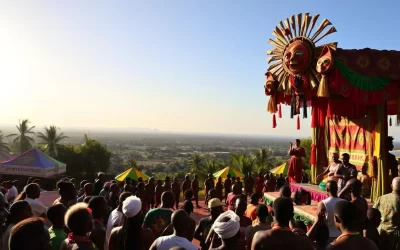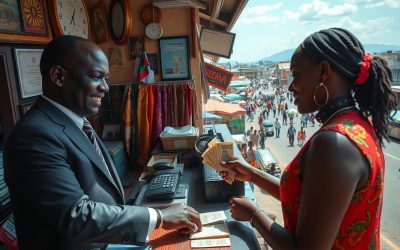✓ Accommodations ✓ Flights ✓ Rental Cars
Welcome to Sierra Leone, a vibrant country where language tells the story of its rich heritage. This West African nation is a linguistic mosaic, blending colonial influences with indigenous traditions. English serves as the official language, used in government and education, while Krio acts as the bridge connecting communities, spoken by approximately 97% of the population.
Beyond English and Krio, over 20 indigenous languages thrive here. Mende and Temne are among the most prominent, spoken by 31% and 37% of the population, respectively. These languages reflect the cultural diversity that makes this country so unique.
Freetown, the capital, is at the heart of this linguistic tapestry. It’s a place where history and modernity meet, shaping the way people communicate. Whether you’re exploring the bustling streets or the serene countryside, you’ll find that language is an essential part of life in Sierra Leone.
Understanding Sierra Leone’s Linguistic Landscape
Sierra Leone’s linguistic landscape is a vibrant reflection of its cultural and historical depth. This West African nation is home to a rich tapestry of languages, each telling a unique story of its people and heritage.
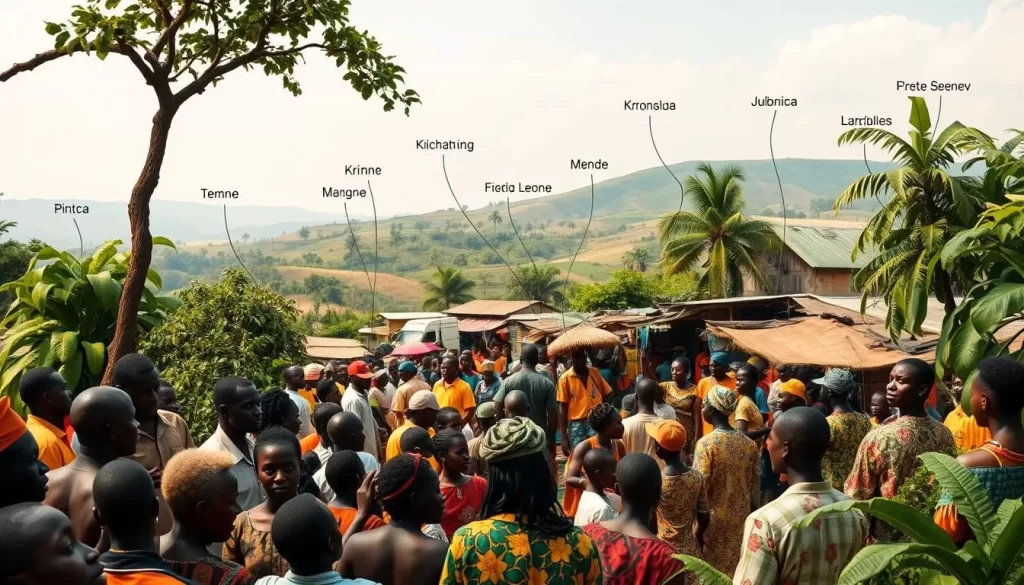
Cultural Heritage and Diversity
The country’s multilingual nature is deeply tied to its diverse ethnic groups. Over 20 indigenous languages thrive here, with Mende and Temne being the most prominent. These languages are not just means of communication but also symbols of cultural identity.
Local traditions and ethnic practices have played a significant role in preserving these native languages. From storytelling to ceremonies, language remains a vital part of daily life and cultural expression.
Historical Influences on Language
Historical events have also shaped the linguistic profile of the region. Colonial rule introduced English as the official language, which is now used in government and education. However, indigenous languages continue to hold strong, reflecting the resilience of local cultures.
Language in Sierra Leone is more than just words—it’s a bridge that connects communities and fosters national integration. Whether in bustling cities or rural villages, it’s a cornerstone of everyday life.
English in Sierra Leone: Its Official Role in Society
English plays a pivotal role in shaping Sierra Leone’s societal framework. Introduced during colonial times, it remains the official language used in government, education, and formal communication. Its adoption reflects both historical influences and modern necessities.
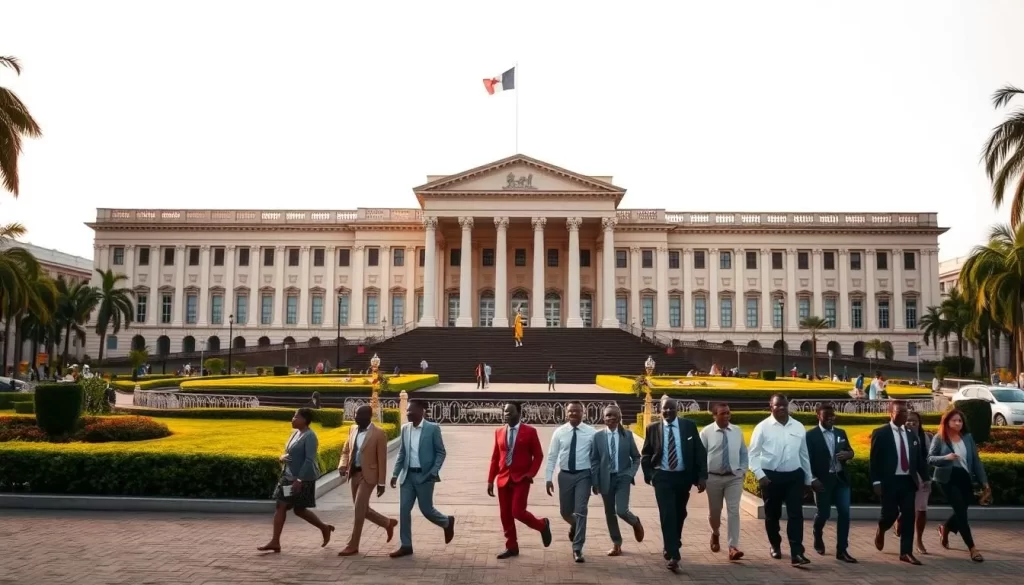
Colonial Legacy and Official Adoption
The colonial era left a lasting mark on the country’s linguistic identity. English was established as the medium for administration and governance, a legacy that continues today. Freetown, the capital, became a focal point for its evolution, blending historical roots with contemporary usage.
Despite the presence of over 20 indigenous languages, English serves as a unifying tool. It bridges diverse communities, enabling effective communication across regions. This role is particularly evident in formal settings, where it dominates as the primary medium.
English in Education and Media
In education, English is the language of instruction from primary to tertiary levels. Approximately 60% of the population is fluent in it, primarily as a second language. This proficiency is crucial for accessing higher education and professional opportunities.
Media also relies heavily on English. Newspapers, television, and radio broadcasts predominantly use it, reaching a broad audience. This widespread usage reinforces its importance in daily life and cultural expression.
| Domain | Role of English |
|---|---|
| Government | Official communication and administration |
| Education | Medium of instruction and examinations |
| Media | Primary language for news and entertainment |
English’s role in Sierra Leone is more than functional—it’s a symbol of progress and unity. Whether in classrooms, courtrooms, or newsrooms, it continues to shape the nation’s future.
Krio: The Heartbeat of Sierra Leonean Communication
Krio, a creole language, has become the heartbeat of Sierra Leonean communication. Spoken by nearly 97% of the population, it serves as a unifying force across the country’s diverse ethnic groups. This English-based creole is more than just a means of conversation—it’s a symbol of cultural identity and national pride.
Lingua Franca Across Regions
Krio acts as a lingua franca, bridging the gap between different linguistic communities. Whether in bustling urban centers or remote provinces, it’s the go-to language for daily interactions. Its simplicity and adaptability make it accessible to people from all walks of life.
In markets, schools, and even government offices, Krio facilitates communication where other languages might fail. This widespread use highlights its role as a vital tool for social cohesion and integration.
Cultural Revival and Modern Usage
After facing discouragement during colonial times, Krio experienced a cultural revival post-independence. Today, it’s celebrated as a cornerstone of Sierra Leonean heritage. Modern initiatives in education and media have further cemented its place in society.
Radio programs, television shows, and even social media platforms now feature Krio, reinforcing its relevance in contemporary life. These efforts have not only preserved the language but also strengthened cultural pride among the population.
| Aspect | Role of Krio |
|---|---|
| Communication | Bridges ethnic and linguistic divides |
| Culture | Symbol of national identity and pride |
| Media | Prominent in radio, TV, and social platforms |
Krio’s journey from a creole to a national language is a testament to its resilience and importance. It’s not just a way to speak—it’s a way to connect, celebrate, and preserve the rich heritage of Sierra Leone.
Exploring Indigenous Languages: Mende, Temne, and Others
Sierra Leone’s indigenous languages are a testament to its cultural richness and diversity. Beyond English and Krio, over 20 native tongues thrive, each reflecting the heritage of its speakers. Among these, Mende and Temne stand out as the most widely spoken, deeply rooted in the southern and northern regions, respectively.
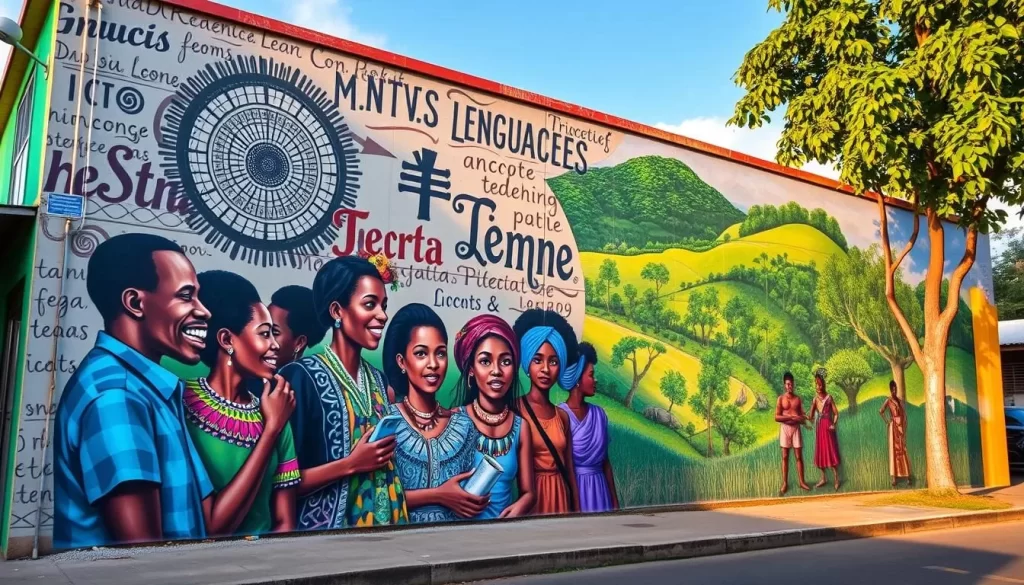
Dominant Regional Languages
Mende, spoken by approximately 31% of the population, is primarily found in the Southern and Eastern Provinces. It serves as a mother tongue for over 1.4 million people, making it a cornerstone of local identity. Temne, on the other hand, is used by about 32% of the population, predominantly in the northern areas.
These languages are more than just communication tools—they are integral to daily life. From storytelling to traditional ceremonies, they preserve cultural practices passed down through generations. For example, Mende farming practices, including rice cultivation, are organized into local labor groups, reflecting the language’s role in community structure.
While English and Krio dominate formal settings, Mende and Temne remain vital in rural and cultural contexts. This balance highlights the coexistence of modern and traditional influences in the country.
| Language | Region | Percentage of Speakers |
|---|---|---|
| Mende | Southern and Eastern Provinces | 31% |
| Temne | Northern Region | 32% |
Indigenous languages like Mende and Temne are not just linguistic elements—they are symbols of cultural pride. They connect communities to their heritage, ensuring that traditions remain alive. For more insights into Sierra Leone’s ethnic diversity, explore this detailed analysis.
These languages also play a crucial role in fostering unity. Despite the influence of English and Krio, they remain a vital part of the country’s identity. To learn more about the cultural mosaic of Sierra Leone, visit this comprehensive guide.
Sierra Leone: Official and widely spoken languages
The linguistic diversity of Sierra Leone extends beyond its dominant languages, offering a fascinating glimpse into its cultural complexity. While English and Krio are widely recognized, the country is home to numerous lesser-known dialects and minority languages that enrich its heritage.
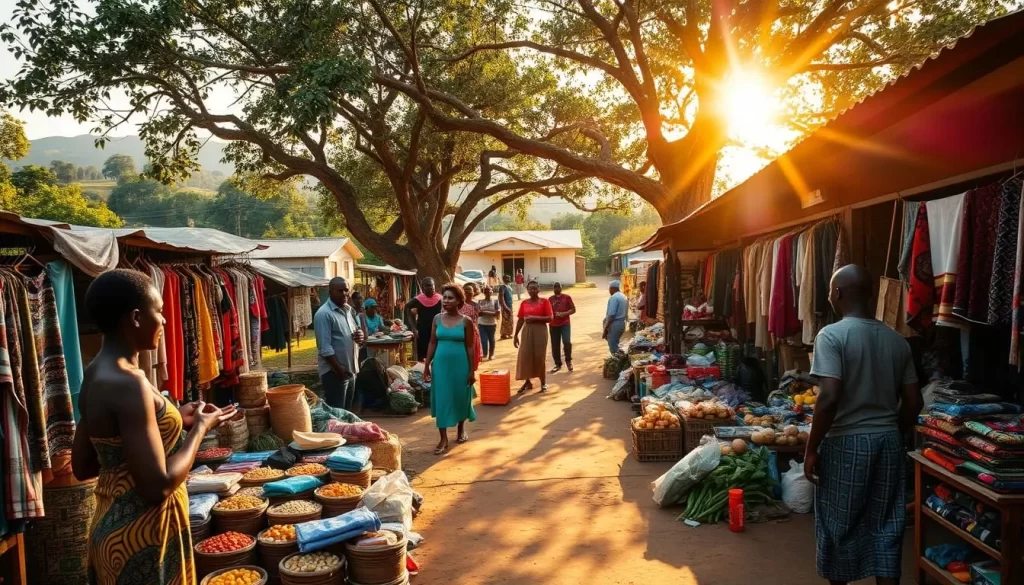
Lesser-Known Dialects and Minority Languages
Beyond Mende and Temne, Sierra Leone boasts a variety of indigenous languages like Kono, Kissi, and Limba. These dialects, though less prominent, play a crucial role in preserving the cultural identity of specific regions.
However, many of these minority languages face challenges. With the dominance of English and Krio, some dialects are at risk of fading away. Efforts to document and revitalize these languages are essential to maintaining the country’s linguistic diversity.
Language Preservation and Future Trends
Initiatives to preserve minority languages are gaining momentum. Government programs and community-led projects aim to document oral traditions and teach these languages to younger generations.
Media also plays a vital role. Radio broadcasts and digital platforms are increasingly featuring minority languages, helping to keep them alive. These efforts ensure that the capital and rural areas alike celebrate their unique linguistic heritage.
Honorary Language Status and Its Impact
In December 2002, Bengali was declared an honorary official language in recognition of the contributions made by Bangladeshi peacekeepers. This decision highlights how external influences can shape language policy in Sierra Leone.
While Bengali is not widely spoken, its honorary status serves as a reminder of the country’s interconnected history. It also underscores the importance of recognizing languages that contribute to national unity.
Looking ahead, the preservation of linguistic diversity remains a priority. By embracing both dominant and lesser-known languages, Sierra Leone can continue to celebrate its rich cultural tapestry. For more insights into the country’s linguistic heritage, explore this detailed resource or learn about its diverse languages.
Conclusion
The blend of languages in this West African nation tells a story of unity and diversity. English serves as the official language, while Krio connects communities across the region. Together, they reflect the country’s rich cultural heritage.
Historical influences and regional differences have shaped this linguistic identity. From the bustling streets of Freetown to the serene countryside, language bridges divides and fosters national pride.
Preserving both dominant and minority languages is vital. They are not just tools for communication but symbols of cultural resilience. Efforts to document and revitalize these languages ensure they remain a vibrant part of the country’s future.
Language plays a key role in fostering unity across diverse provinces. By embracing this linguistic mosaic, you can appreciate the unique story it tells. Explore more about this fascinating topic in this detailed analysis.
The above is subject to change.
Check back often to TRAVEL.COM for the latest travel tips and deals.



